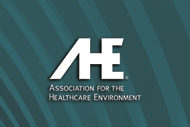Hospitals are seeing a strong shift from inpatient care to outpatient care, patients are utilizing urgent care centers vs. emergency rooms, and patients are qualifying as observation status vs. inpatient status. This all has had a huge impact on hospital reimbursements. Health care professionals are experiencing unprecedented times and we need to know how to survive in a climate we have never experienced before. Not only do we need to understand it and get used to it, but we also need to prosper in it.
Environmental services (ES) professionals need to have a clear understanding of how our profession ties into reimbursements and how we can have a positive effect on them. We have an impact on the reimbursements from HCAHPS scores, but we also need to demonstrate our impact on reducing health care-associated infections (HAIs). Some may refer to those costs as soft costs, but it’s money we lose if we have to spend it and there is also a huge cost to affected patients and their families.
ES not only has to show value as a cost center, but it also has to constantly vie for its place in the hierarchy. Clinical staff are constantly stretched to meet the direct needs of the patients. Any nonclinical tasks undertaken by clinical staff in the past are slowly moving down on their priority list. In some cases, ES is being asked to pick up some of those as additional tasks because we’re considered a support service.
How can ES make a better impact on this new world? We can make sure that patients experience a clean environment and that their risk of acquiring an HAI is drastically reduced because our staff are proficient in the use of chemicals and in cleaning high-touch surfaces. We can continue to strive for proper hand hygiene.
Hospital leaders may not be aware of the tasks you may be performing that add value to the patient experience. Talk about it at every opportunity. We need to redefine our value as ES professionals. This may not be as easy as it sounds. Change to our routines is a challenge, but it is our new reality and we need to prepare our front-line technicians. Work closely with your teams on their goals and how they are going to change in the future.
Also, be familiar with the regulatory agencies that affect our professions. Regulations change and we must stay relevant to our profession, but we also must be able to speak with knowledge.
AHE’s online learning platform, ENGAGE, is a tremendous resource. Encourage your team to join AHE’s LinkedIn discussions. We serve as resources for each other. Don’t be afraid to step out of your comfort zone. Read articles and research what you don’t know. Connect with other AHE members in the ES field who can offer you support or a resource to get where you need to go.
We need to change how we think and how we act as professionals. It is crucial to develop a road map from which your team can work. You need to be the GPS for your team and lead the way.
Valuable resources available
AHE represents, defines and advances the professionals responsible for care of the health care environment to ensure high-quality outcomes and healthy communities. Following are a few of the resources that AHE offers.
• Recommended Practice Series: Environmental Services Equipment and Supplies. The equipment and supplies covered in this booklet are essential, discrete components of safe, efficient and productive environmental services (ES) operations. For more information, go to www.ahe.org/ahe/learn/tools_and_resources/publications.shtml.
• Benchmarks and other Metrics for Effective Linen Management. This webinar looks at metrics such as processing and replacement costs, pounds per adjusted patient day, total cost per pound and labor-distribution cost per pound to help you assess and evaluate the cost-effectiveness of your program. To access it, log on to www.ahe.org/education.
• AHE Environmental Sustainability Certificate Program. AHE has launched a new certificate program to acknowledge the ongoing and outstanding environmental and ecological sustainability efforts of ES departments. For more information on the program, go to www.ahe.org/ahe/lead/environmental_ sustainability_certificate_program.shtml.



